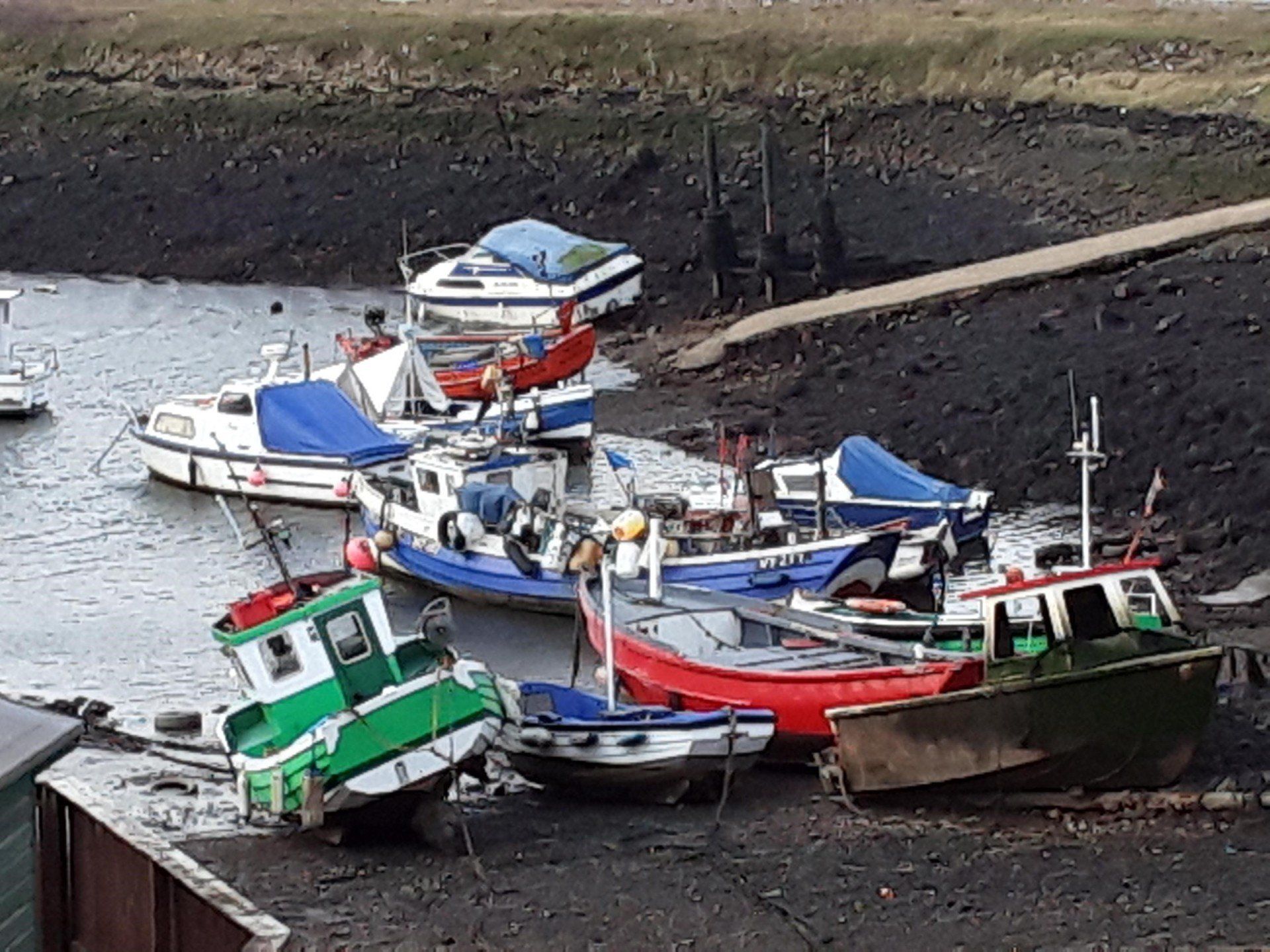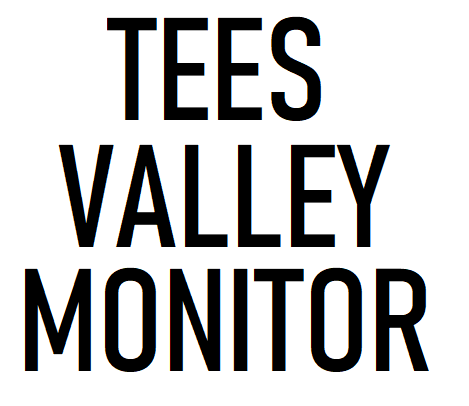Pollution in the
Tees Estuary:
Are Things about
to Get Worse?

boats at South Gare, Redcar
Scott Hunter
18 March 2022
The large-scale die-off of crustaceans in the Tees Estuary in the autumn of 2021 caused a great deal of alarm in the region, particularly among the inshore fishermen. Their consternation only increased when DEFRA began its investigation into the problem, denying at an early stage that this was a pollution incident.
Sceptical of this conclusion, the Whitby Commercial Fishing Association commissioned marine pollution expert Tim Deere-Jones to produce an independent report. They had good reason to be sceptical. While water quality has improved over the past thirty years, the Tees was once the most polluted river in Britain. Redcar and Cleveland Council report that in 1970, 500 tonnes of industrial waste were being pumped into the river daily. Much of that is still there in the sediment and mudstone. So, there was always the potential for that to be disturbed by dredging.
Deere-Jones’ final report was released last week. Importantly, the data he used to reach his conclusions were obtained through FOI from DEFRA, the Marine Management Organisation (MMO), and the Centre for the Environment, Fisheries, and Aquaculture Science (CEFAS). So, both his report and DEFRA’s are based on the same data set. Yet the conclusions reached could not be more different.
He casts serious doubt on DEFRA’s conclusion that the cause was algal bloom. Defra’s evidence for this came from satellite images produced by Plymouth Marine Laboratory (PML). That laboratory, however, observed that the images may have been algal bloom, but not definitely. Deere-Jones points out that the images could equally have shown a dredge plume as dredging spoil entered the water at a dump zone known as Tees Outer. He also points out that average water temperature at that time of year in the Estuary is far too low to support algal bloom.
But the most telling fact is that the data on the presence of pyridine in the dead crustaceans was DEFRA’s own data. The evidence is that pyridine levels in the crustaceans found in the Tees were 100 times higher than those found in a control sample from Cornwall.
To get an idea of just how devastating this incident has been we spoke to marine mammal medic, Sally Bunce, who works for a wildlife rescue charity. Sally and her colleagues monitor the health of the grey seal population in the area. She explains that grey seal pups, typically born in mid-winter, do not fish until after they have been abandoned by their mothers. Initially they survive by accessing the easy prey on the estuary floor, only later moving on to catching fish.
For this reason, seal pups are a good indicator of the health of the ecosystem. And the news from Sally is less than encouraging. She reports that she and her colleagues are finding pups in significant numbers that are currently well below their birth weight. And she explains that as being because their fishing grounds are denuded of life.
She goes on to explain that many of the inshore fishermen, particularly those from Redcar and Hartlepool, do not own vessels large enough to fish beyond the seven-mile limit, so livelihoods are being lost.
We then went to speak to the inshore fishermen in Whitby. They didn’t mince their words. Not only were they convinced that the die-off was the result of dredging, they named the vessel – the UKD Orca – that they alleged was the dredger in question.
Our visit to Whitby coincided with the arrival of the DEFRA roadshow in town. If you think that sounds less than entertaining, you would be right. We spoke to the DEFRA team before they went to meet the local fishermen.
Talk to the Hand …
It so happens that we had spoken to the four DEFRA representatives before the meeting.
“How can we help you?”
“Can you confirm that DEFRA is making a second investigation into more recent crustacean die-off around the Tees Estuary?”
“We’re not here to talk about that.”
What are you here to talk about?”
“We’re here as part of the consultation process on the Joint Fisheries Statement, that will conclude ion 12 April, and will be implemented by 2025.”
“You realise that fishing in this region is in crisis? What are you expecting the fishermen here to want to talk about?”
“The fishermen in North Shields were very positive when we spoke to them this morning. If you want a statement on crustacean die-off you’ll have to apply to our press office. We can’t tell you anything.”
Right.
The fishermen, on the other hand, were there to talk about that.
“We’re here to talk about DEFRA’s plans for the future of the fishing industry post-Brexit”
“What future? We haven’t got one” came the reply from one of the audience.
The fishermen explained, while the DEFRA four sat quietly, not listening, but waiting. That wasn’t what they were here to talk about. But the fishermen’s time wasn’t completely wasted. Everyone left with a leaflet on the future of the fishing industry post-Brexit.
The evidence presented by Deere-Jones appears to be robust. And the report ends with a demand for proper investigation and testing of the sediment. The one thing he doesn’t do is express just how urgently such an investigation is needed.
Trade magazine Dredging Today has reported on the plans for dredging at the South Bank Quay, for which 2 million tonnes of material will be removed. STDC papers indicate that this dredging is due to occur this month (March). If that dredge conforms to standard practice, the spoil will be dumped at the site known as Tees Outer, off the coast of Hartlepool. And as Deere-Jones points out, the current in the North Sea then drags Southwards, potentially resulting in further contamination of the fishing grounds, just as the lobster season is about to begin.
Following rumours that the spoil from future dredging in the Tees will be transported to landfill instead of to Tees Outer, we contacted the main contractor for the South Bank Quay, Graham Construction, for information about the dredge. No response. We tried the Environment Agency, and asked about the dredge and whether any testing of the dredge site had been carried out. They advised us to contact the MMO. No response.
Are DEFRA, the Environment Agency, the MMO and CEFAS just indifferent to the issue? Not surprisingly, it appears, in the end, to come down to money. The Guardian recently reported that Environment Agency funding for environmental protection has been drastically reduced and staff have complained that work that does not generate income, like investigating pollution incidents, has been the most severely affected. In a second Guardian report, EA whistleblowers revealed that the agency has downgraded 93% of prosecutions for pollution incidents over the past four years. In short, when it comes to pollution, the Environment Agency doesn’t want to know.
Is that what they call ‘cutting red tape’?
